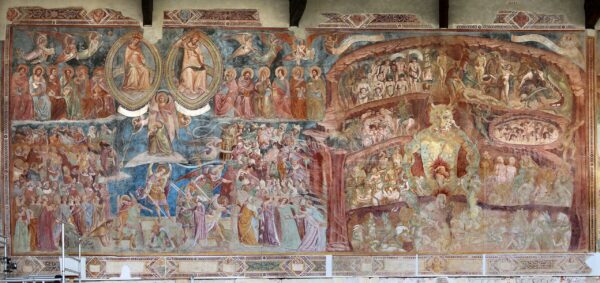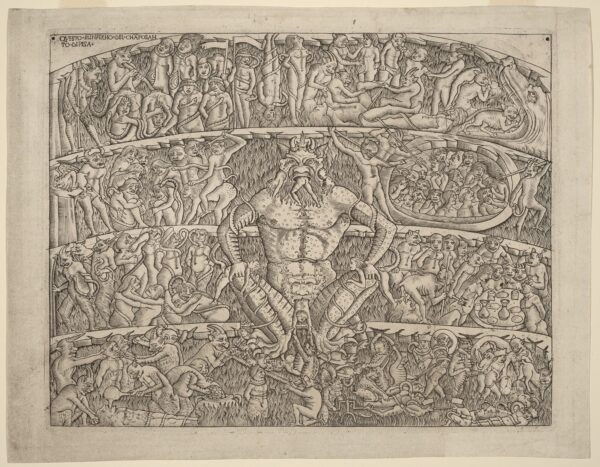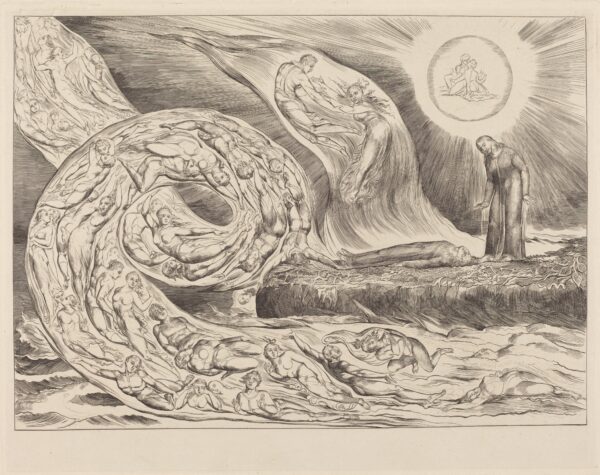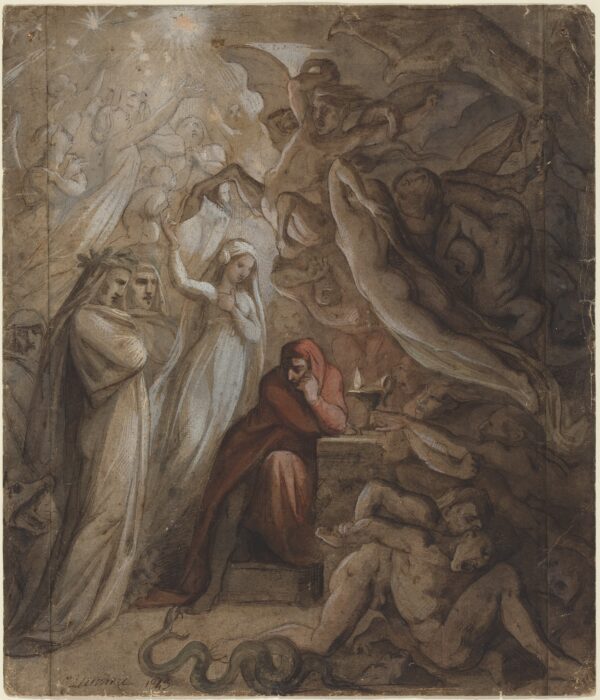

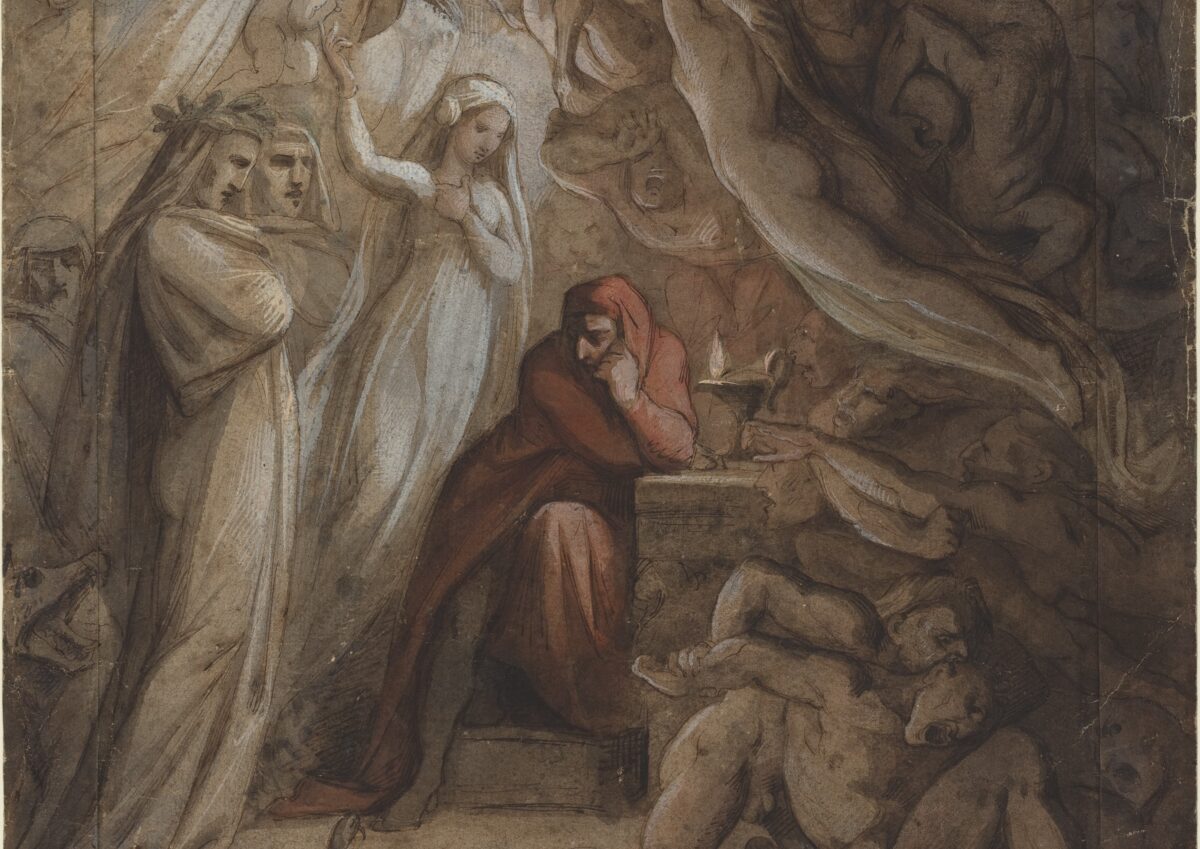
Where are we heading—heaven or hell? Poet Dante Alighieri explores just that in his epic poem “The Divine Comedy,” which he completed around 1321, the year that he died.
Dante wrote 100 cantos (sections), averaging 142 lines, for his poem that charts the journey of the pilgrim Dante through Hell to Purgatory and Paradise. The ancient Roman poet Virgil, symbolizing human knowledge, guides Dante through Hell and Purgatory. And Dante’s childhood love Beatrice, representing the divine mysteries, guides the pilgrim from the top of the mountain of Purgatory (the Garden of Eden) to Paradise. St. Bernard of Clairvaux guides Dante through the Empyrean, the highest levels of heaven to see God and the souls of those who’ve been saved.
Throughout the poem Dante uses Christian beliefs and Greco-Roman mythology, along with social and political tales of his day to illustrate the narrow path to ascension.
James Sales, in The Epoch Times article “What Rational Morality is Based On,” writes that “Dante’s whole poem “The Divine Comedy” can be said to be about the perversion of reason (the intellect) that leads to hell, damnation, and the unending misery of so much of the human condition in this life as well as the next.”
Artists have long interpreted the cantos of “The Divine Comedy” on canvas, paper, and in stone. The National Gallery of Art holds a number of such works, 20 of which are now on display in the exhibition “Going Through Hell: The Divine Dante.”
Excerpts from the poem accompany some of the artworks on display, highlighting the artists’ inspirations, and reminding us of the divine consequences of our actions.
Gallery visitors may feel as though they are being guided through the exhibit by Dante himself, when they read wall quotes like that which led the pilgrim Dante to Limbo:
‘Let us descend now into the blind world here below,’
the poet began, all pale.
‘I will be first, and you second.’ (“Inferno,” canto 4)
Around a decade after Dante wrote “The Divine Comedy,” Dominican friars commissioned Buonamico Buffalmacco to paint a fresco of The Last Judgment and Hell on the walls of the Camposanto (cemetery) in Pisa, Italy. In the exhibition, an engraving by an unknown artist shows Buffalmacco’s graphic vision of Hell in all its infamy.
Even in black and white, it’s a graphic and repulsive picture full of torment and torture. A series of concentric rings show some of the punishments given to different sins in Dante’s nine levels of Hell. In the center, a horned Lucifer devours and evacuates sinful souls.
From the mouth of each [hole]/ projected the feet of a sinner and his legs as far as the calf. (“Inferno,” canto 19)
Other artworks on display delve into the consequences of specific sins, such as the lust that Dante described in canto 5 of the “Inferno.” A wall plaque next to William Blake’s engraving “The Circle of the Lustful: Paolo and Francesca” hints at their adulterous downfall.
How many sweet thoughts,
what great desire,
brought them to the woeful pass! (“Inferno,” canto 5)
The couple had been reading the Arthurian legend of Lancelot of the Lake, when, driven by desire, Paolo and Francesca fell in love. Both were already married. Francesca’s husband murdered the couple, in a crime of passion. Blake depicted the couple at the moment of their embrace, and about to be punished. Blake interpreted Dante’s punishment as the couple being sucked into a whirlwind with other lustful souls, and stuck in an eternal embrace thereafter.
Also included in the exhibition is Jean-Jacques Feuchère’s painting “Dante Meditating on ‘The Divine Comedy.’” Feuchère bathed one half of the painting in light, with Virgil wearing a robe and a laurel wreath, and Beatrice wearing a veil. She raises one hand up to Heaven, where the artist painted the brightest of stars, perhaps a nod to canto 4 of Dante’s “Paradiso,” where he cites Plato’s philosophy that “the souls appear to return to the stars … .“
Feuchère rendered the rest of the painting in darkness, showing the beasts and shadowy realms of the afterlife. Dante dressed in a red robe sits in the center of the painting, between good and evil—heaven and hell. He’s turned more to the light than the shadows, perhaps pondering the lessons of “The Divine Comedy.” He’s aware of the fierce serpent about to strike at his foot, likely indicating the ever-present temptations and danger of sin.
The gallery’s curator of Italian and Spanish paintings, and the exhibition’s curator Gretchen Hirschauer sums up this universal predicament well in an email: Dante’s “writing reflects a timeless sense of the human condition.”
If “The Divine Comedy” tells us of the perversion of reason, then the poem’s corrective and cautionary tales remain antidotes for our transgressions today. And if each of our transgressions lead us hellward, then living with goodness surely brings us closer to heaven’s gates.
The “Going Through Hell: The Divine Dante” exhibition at the National Gallery of Art, Washington, runs through July 16. To find out more, visit NGA.gov
Throughout the exhibition, the gallery used excerpts from “The Divine Comedy” translated by Charles S. Singleton, Princeton University Press, 1970.

